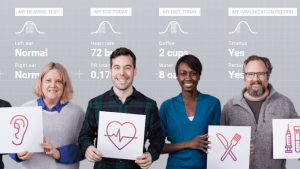
In this post, you will learn about technologies and data gathering strategy for Project Baseline, an initiative by Google.
Project Baseline is an IOT-based AI-powered initiative to map human health. Different kinds of machine learning algorithms including deep learning etc would be used to understand different aspects of human health and make predictions for overall health improvements and precautionary measures. This would require a very large volume of data to be gathered and processed before being fed into AI models. The following represents the data gathering strategies for Project Baseline:
- Diagnostic tests covering blood-related tests; specialized tests such as ECG, chest X-ray, eyesight check
- Doctor examination leading to the collection of data related to health and lifestyle
- Regular health-related surveys to capture lifestyle related data on the go.
- Wearables & sensors devices such as watches for monitoring heart-rates/activity level etc, device under the mattress to monitor sleep habits
Project Baseline Technologies
The following technologies look to form the core of the technologies used in the project baseline.
- Artificial intelligence (machine learning, deep learning)
- Internet of Things (IoT) to transmit data from devices to the cloud
- Big data technologies for data processing
- Cloud computing for using different cloud services for data processing
Companies/Universities involved with Project Baseline
- Coefficient of Variation in Regression Modelling: Example - November 9, 2025
- Chunking Strategies for RAG with Examples - November 2, 2025
- RAG Pipeline: 6 Steps for Creating Naive RAG App - November 1, 2025
I found it very helpful. However the differences are not too understandable for me